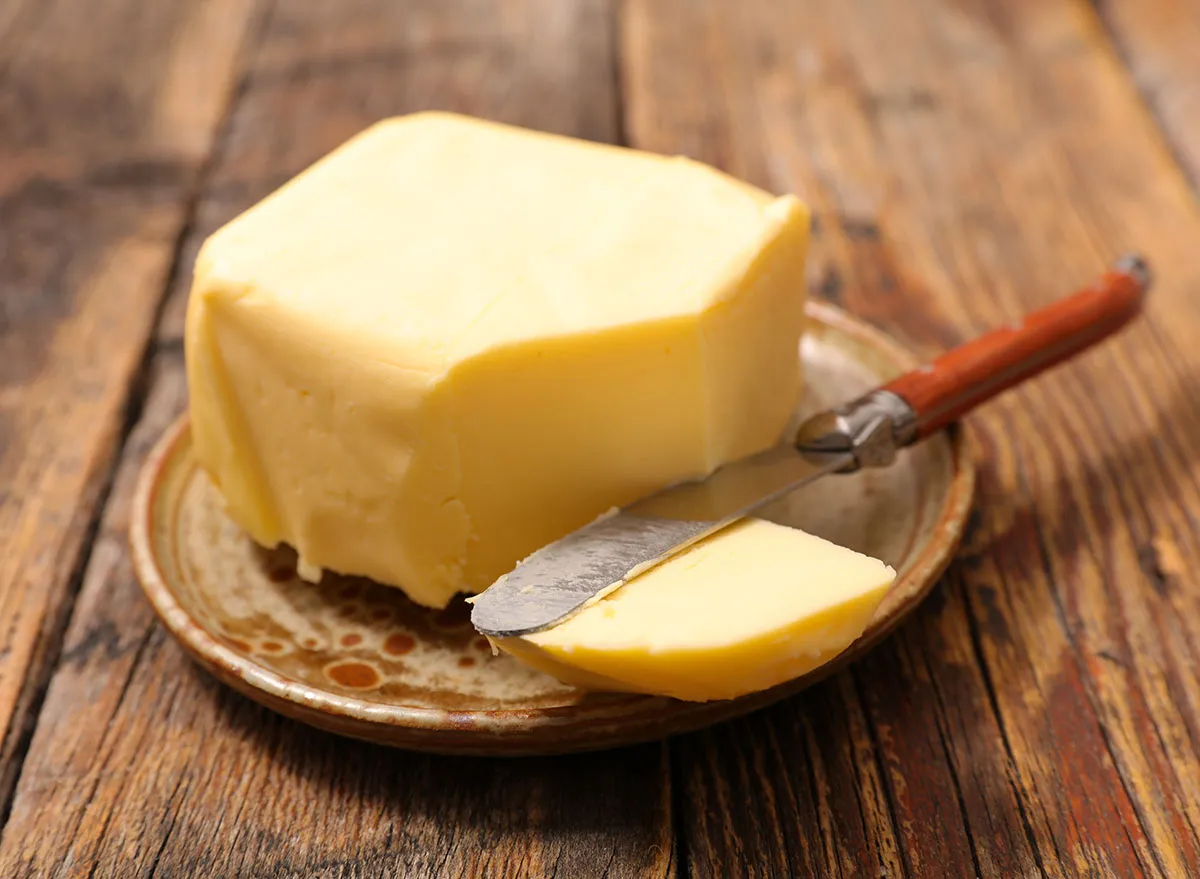Butter Boards Are Everywhere, But a Major Ingredient Shortage May Soon Dampen the Trend

Butter boards are the latest viral food trend taking TikTok by storm. The creamy creations, boasting large wooden boards slathered in rich, often-flavored butters, perfect for dipping crusty pieces of bread, have been touted as a charcuterie board replacement. And, to be fair, they look and sound delicious. There's just one issue with the new trend: a butter shortage in the United States that's likely to get worse before it gets better.
While the idea for the buttery excess, pioneered by chef Joshua McFadden and popularized by food influencer Justine Doiron, was born well before the shortage, the trend could now be contributing to the empty butter shelves at local grocery stores.

Although your TikTok "For you" page may be full of folks making butter boards, butter is currently the most expensive it's been since 2017. Butter prices reached upwards of $4.77 per unit in August, according to The Wall Street Journal. That's because the U.S. has the lowest amount of butter in storage facilities in that same five-year period. Only eggs have seen a similar price increase trajectory, according to the newspaper. The shortage has led to a 24.6% increase in butter prices in the last 12 months, which could spell disaster for butter board fans and holiday bakers alike.
The reasons for the shortage are complex. It was sparked in part by issues plaguing milk production, which instead of seeing its typical year-over-year growth, saw a decrease amid various cost struggles dairy farmers have faced, including a decrease in the number of dairy cows. To make matters worse, WSJ explains that butter is low on the milk-product food chain, meaning that milk is typically sold to bottlers first, followed by ice cream and cheese companies, and, lastly, butter makers.
Another huge factor in the butter shortage is the labor shortage. If you've been just about anywhere recently, there's a good chance you've seen signs advertising job vacancies. According to WSJ, processing facilities that churn out butter have been dealing with similar staffing shortages to the rest of the post-pandemic world. This means that while simply ramping up production might help meet some of America's butter needs, this isn't necessarily a viable solution.
Couple all of that with an increased demand, fueled by food trends, holiday necessity, and, of course, the fact that butter makes everything better, and you've got a recipe for disaster. According to the United States Department of Agriculture (USDA), there is some real concern among suppliers in parts of the country about being able to meet the demand of orders from retailers. Likewise, some in the industry fear quite the opposite, worrying that sky-high prices may cause consumers to turn away from butter, opting for alternatives instead. For this reason, producing more butter is a risk.
In an effort to combat rising prices, and the hesitancy from shoppers to buy products that are significantly marked up, grocers are likely to want to offer over-the-top deals to entice scarcity-minded buyers. Marshall Reece, of the Associated Milk Producers Inc. (AMPI), warned against that in an interview with WSJ. He revealed that AMPI's butter production is down between 5% and 10% this year as compared to before the pandemic.
"You can't have a fire sale on butter, we won't be able to supply you," Reece said.
The best way to combat such shortages is to turn to alternatives when possible or skip the butter altogether. Yes, that means you might have to hold off on whipping up a butter board for now. Reach for plant butters or margarine when possible. Opt for butter-free desserts, or turn to replacements like coconut oil. You can also do your part to extend the life of the butter you do have by freezing it. Frozen butter is good for several months to a full year.
This too shall pass, and you'll be back to enjoying butter on all your favorite dishes soon enough.









